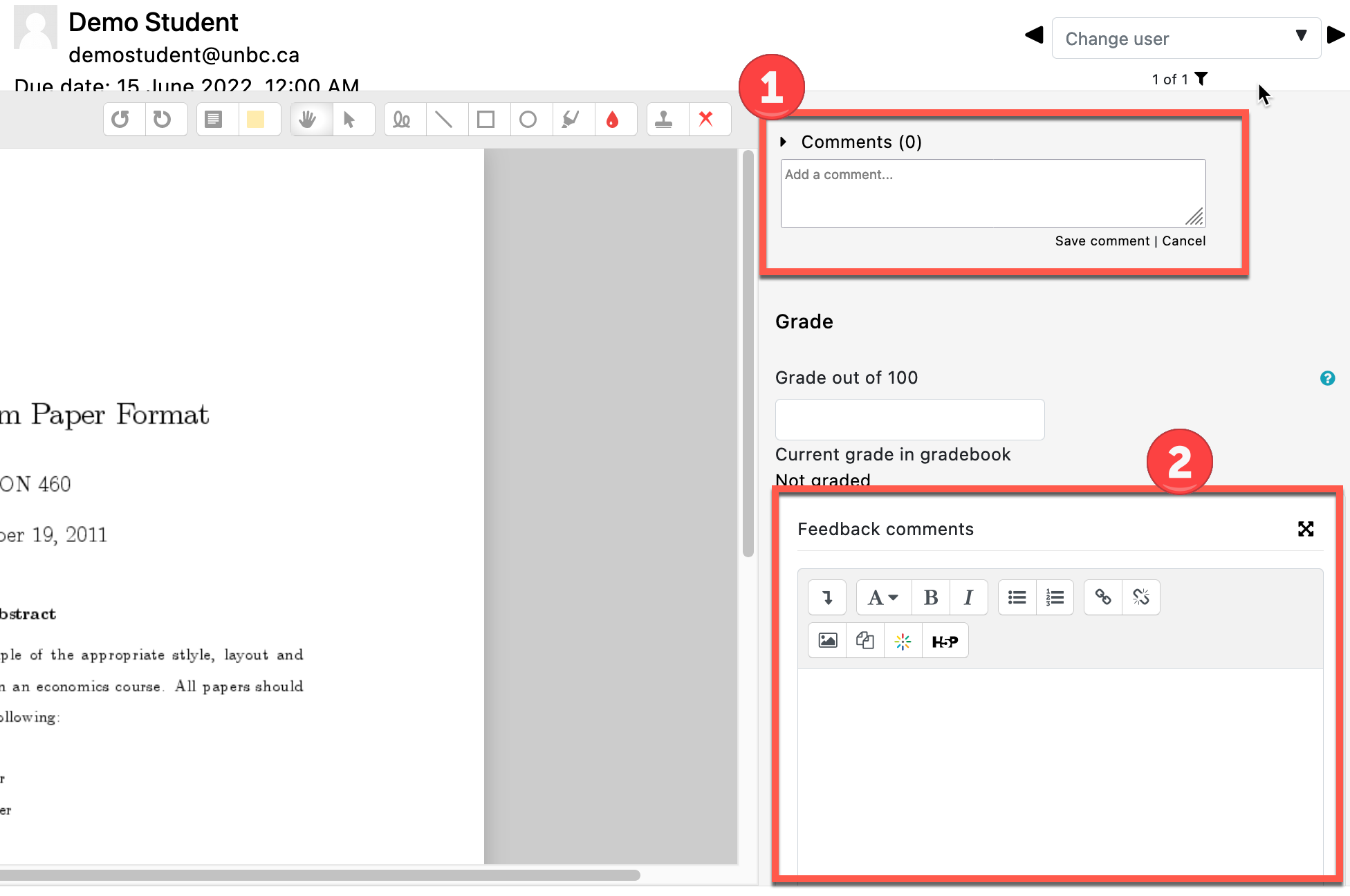Moodle Essentials: Structuring, Sharing, and Supporting Learning
Grading Assignments
Like with most features, there are several different ways to mark in Moodle, but in essence there are 3 ways to grade and add feedback:
- One student at a time
- Multiple students at once
Go to your course in https://moodle.unbc.ca and select the assignment you wish to grade by clicking Grade on the Right hand side of the screen
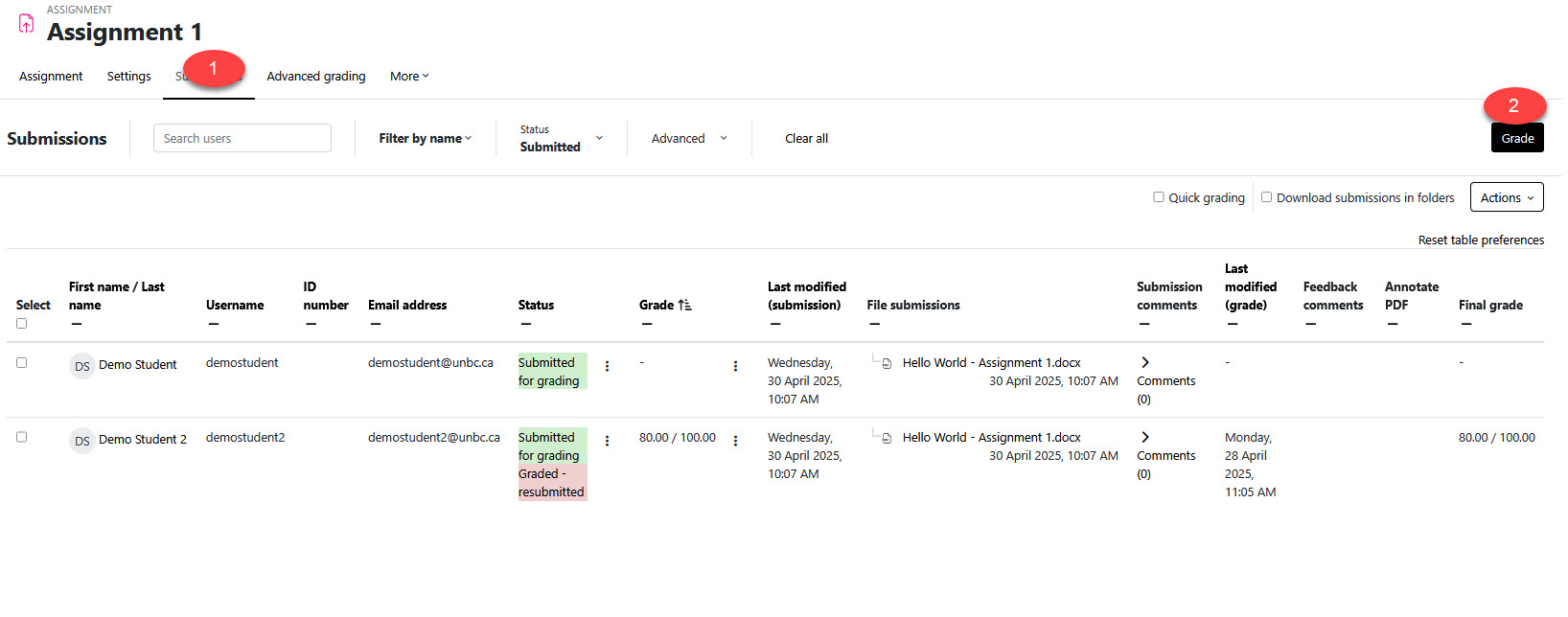
If your students have submitted a PDF version of their Assignment, you can grade the Assignment directly in Moodle. If they have submitted another format such as MS Word or MS PowerPoint, you will need to download the file.
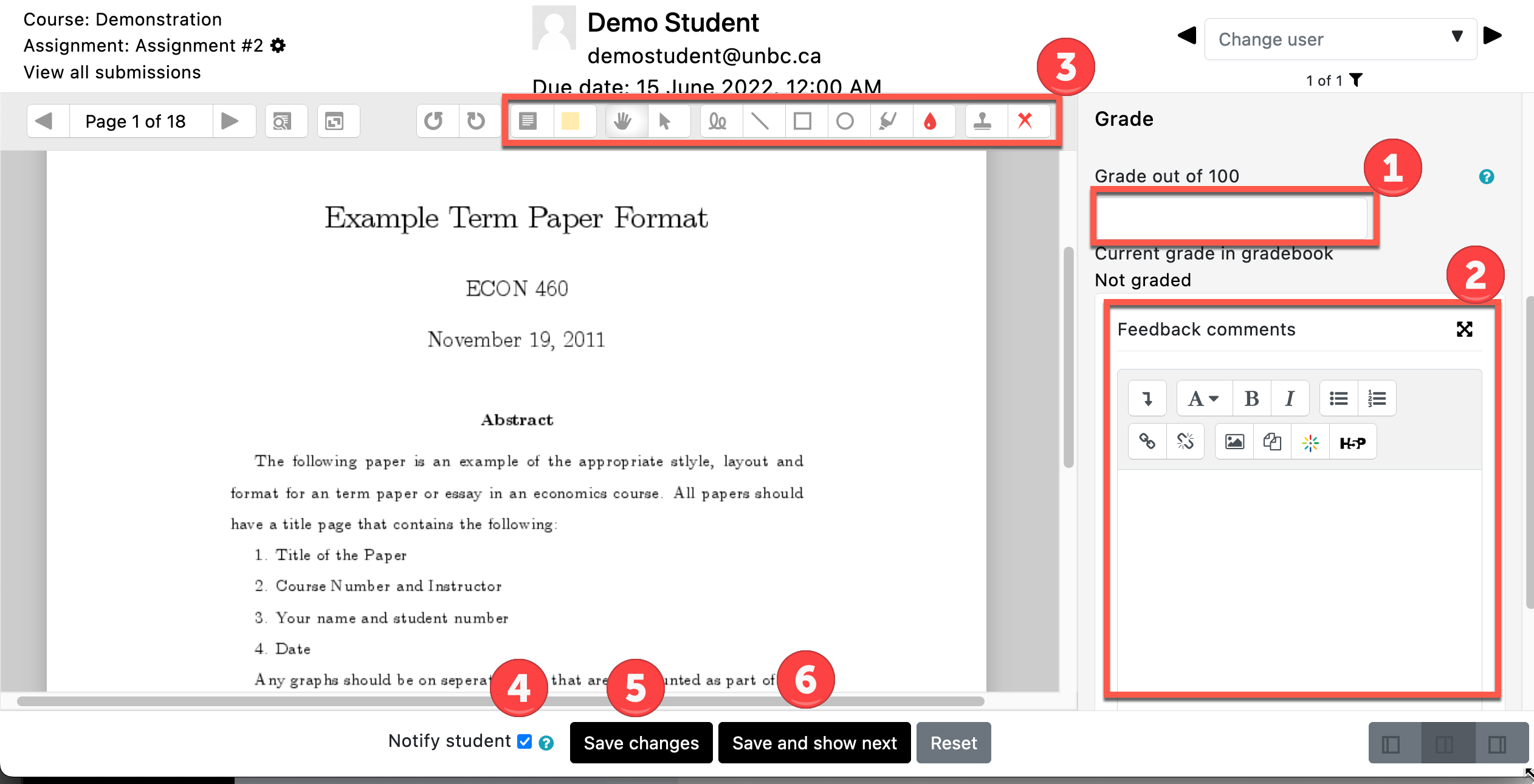
When your chosen assignment submission opens you will be presented with a number of options:
- Enter your grade for the submission here
- Leave any open-ended feedback for your student here
- You can annotate submissions with text notes, highlights, and freehand annotations. Note: Annotation is only supported on PDF file submissions.
- You can choose to notify students of their grade and feedback when you have finished grading. You can disable this feature, but the default in the system is to notify students.
- [Save] your update for the submission.
- If you would like to continue grading all submissions of this assignment, you can select [Save and Show Next]
Frequently Asked Questions
How do students see their grades?
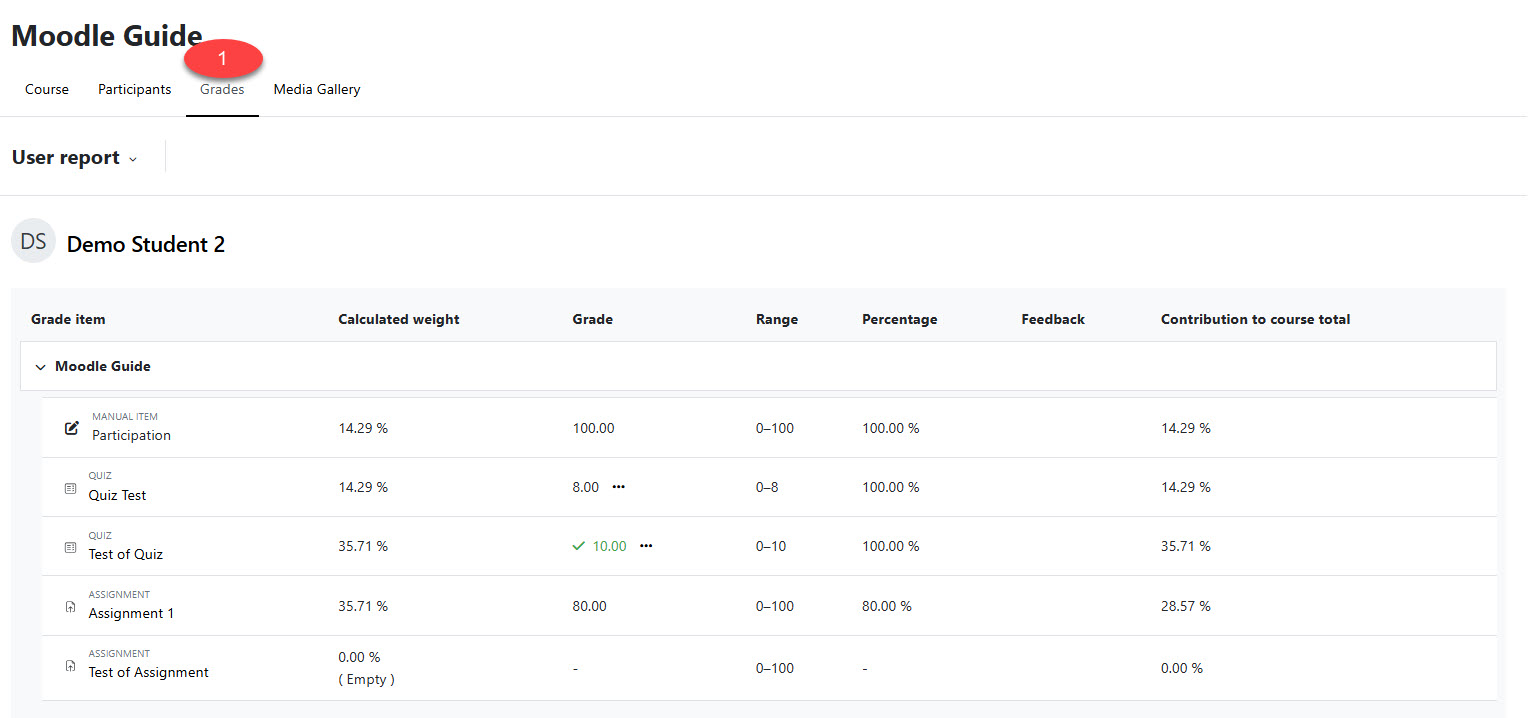
Students have a [Grades] tab in all their courses. They can view grades and feedback for all assessments and assignments in this tab.
How to reopen an assignment so students can re-submit?
If you need to extend an assignment due date for a student you can use an [Override].
Open the assignment you wish to provide an extension for, then:
1. Select [More]
2. Select [Overrides]
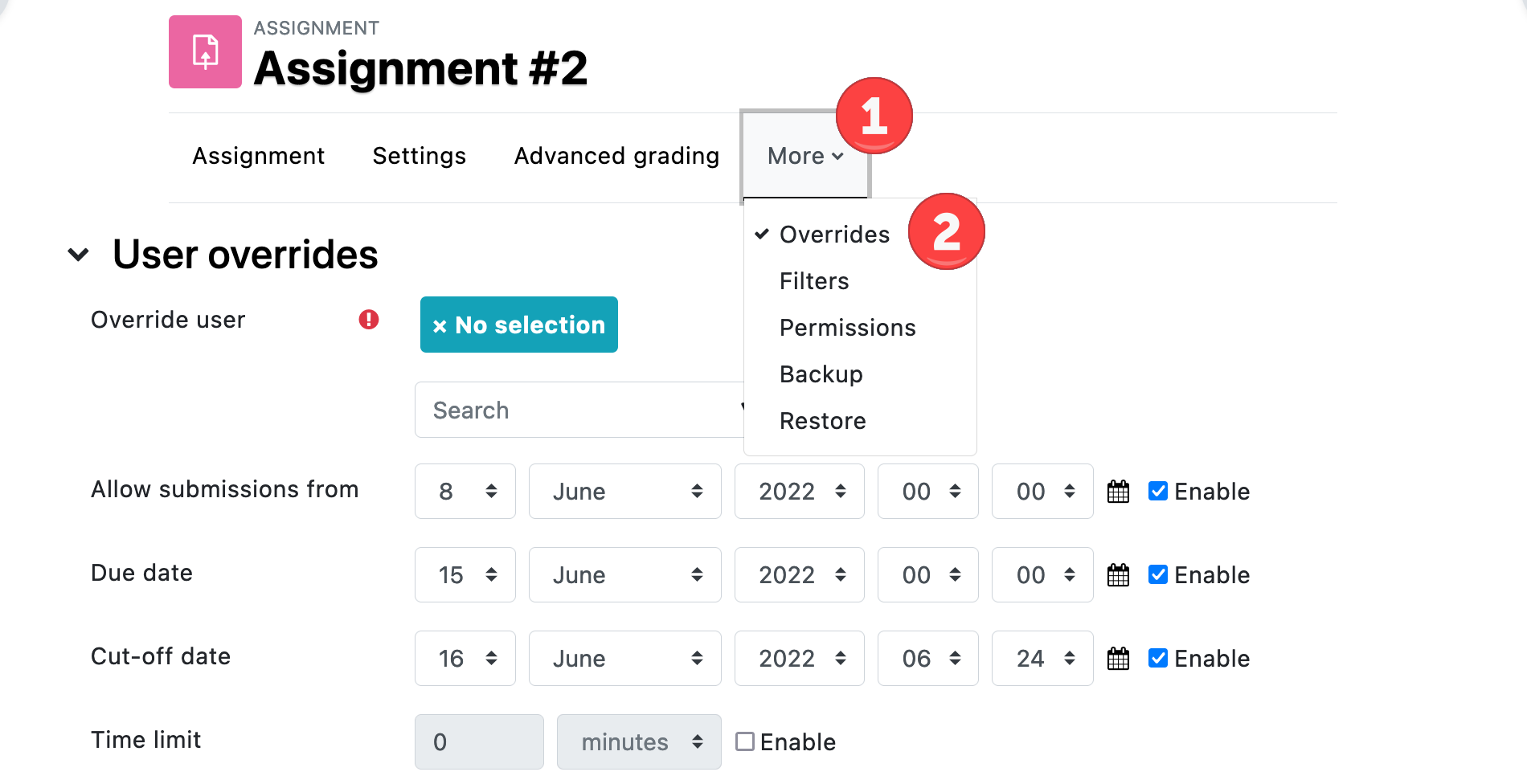
In the [Override] area you can:
- Select the student(s) you wish to provide an extension for
- Select the “Allow submissions from” date
- Select the “Due date”
- Select the “Cut-off date”. Note, students can still submit an assignment in a date range between “Due date” and “Cut-off date” but it will be flagged for you as Late when grading the submission.
When you are done applying the extension override, press [Save]
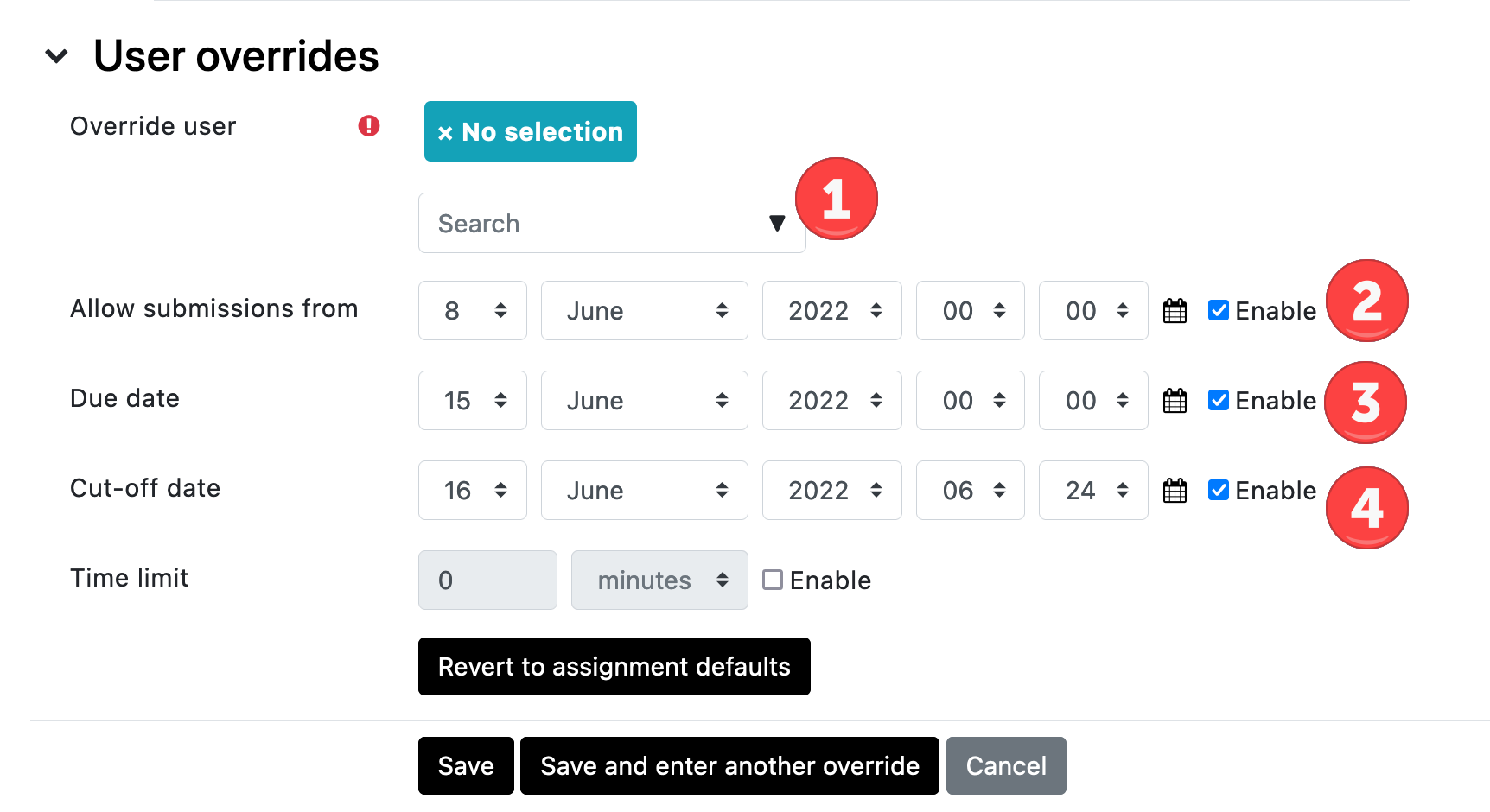
How do I annotate assignments?
You may want to annotated a student’s assignment if, you would like to give a student feedback on their assignment directly within https://moodle.unbc.ca. Instead of, having to download their submission and adding comments within the file itself, and then re-uploading it to their submission as a feedback file.
When grading a PDF assignment submission you will see row of tools you can click on to annotate the submission. If you hover over each icon you will see the description of that tool.
![]()
There are several tools to mark up assignments here and to find out what they are or what you would like to use, we encourage you to play around with these features.
Some examples of annotation tools:
To delete, select the arrow icon, then click on the item you wish to delete and select the trash can icon within the item to get rid of it.
To draw on the assignment with your cursor, click the squiggly line icon.
To stamp an assignment (i.e. checkmarks or happy faces) click on the red X icon and then pick from the dropdown which stamp image you would like to use on the assignment.
To type comments click on the icon that looks like a lined piece of paper, click and drag where you would like it and then start typing within it.
To circle something, click on the circle icon and drag it over what you would like to circle.
When grading an assignment submission what is the difference between comments and feedback ?
Notes can be added to a students assignment submission in Moodle as either a comment or feedback comment.
The difference is that students can only reply back to comments that are left on their assignment submission, not feedback.
- To add a comment, click on Comments and type your message.
- To leave feedback, click on the Feedback comment box and type in your feedback.
